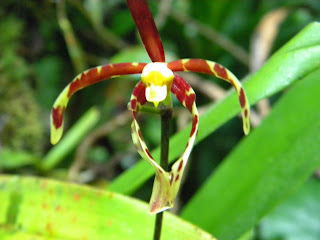 What I didn’t want was an ashtray with “Sabah, Borneo” etched on it. But all the souvenirs in the handicraft market seemed to be . . . well, so souveniry. I wanted to bring back a few items to remind us of our trip to Malaysia, but we certainly didn’t need any more postcard.
What I didn’t want was an ashtray with “Sabah, Borneo” etched on it. But all the souvenirs in the handicraft market seemed to be . . . well, so souveniry. I wanted to bring back a few items to remind us of our trip to Malaysia, but we certainly didn’t need any more postcard. The taxis in the city of Kota Kinabalu all have illuminated signs on top that read “Teksi” which is pretty neat because it is (almost) the phonetic spelling of the word “taxi.” Same but different. Fun. Cool.
After seven days in Kota Kinabalu and our third fruitless foray into a market, I found myself staring at the top of a taxi. I started to wonder when it got dark in Borneo and then I started to wonder where I could get my hands on a screwdriver.Then I came up with a more rational, low-risk plan. Right next to the laundry shop where we had been bringing our dirty clothes throughout the week (a load of laundry for just ten ringgit per kilogram!) was a small auto supply store. When I enquired, the guy behind the counter told me they didn’t have any –they mostly sold audio equipment- but he knew where I might get one. He wrote down an address on a scrap of paper.
The family and I hopped into a taxi to go to dinner. I gave the paper to the driver. He said he knew the shop but it would be closed by now. He offered to drive me past it on our way to dinner so that I could find it on my own the next day. It was a good thing, because I never would have found this little shop tuck away in an industrial section of town. Surprisingly, when we pulled up to the shop at 7:12 p.m., it was still open.
It took a little bit of pantomiming, but when I finally got across what it was that I wanted, the clerk pointed up. Sure enough, there hanging above my head, were several plastic “teksi” signs.Initially, she was asking 65 ringgit, but we finally agreed on fifty.
I think I’ll run an electric cord to it, put a light bulb in it, and turn it into a desk lamp. It will be quite the conversational piece in my classroom.
Nine days in Borneo and I made it out without buying a monkey carved from a coconut.



































